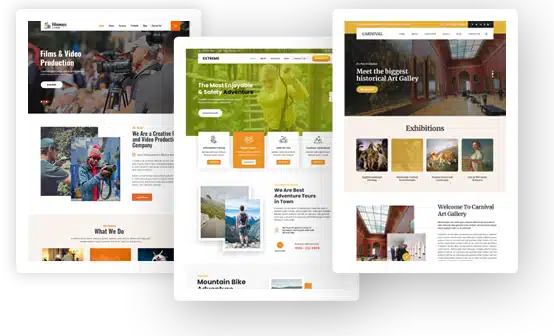How to Use Email Outreach to Build Quality Links

Today, there are many ways to build quality backlinks for your website. Broken link-building, guest posting, and crafting share-worthy content are just a few strategies that businesses can use. Yet, direct outreach and networking with other sites, blogs, and influencers are among the most straightforward tactics.
Though it may be straightforward, link-building outreach turns out to feel rather confusing and challenging to many marketers. It’s the art of making the first contact, nurturing your relationships, and pitching your content in a way other webmasters can’t refuse to share. And this process might feel especially complicated when using solely email, albeit it is one of the most widespread means of communication that can expand your opportunities beyond any expectations.
In this guide, we’ll tell you why they matter and how to get backlinks that boost your rankings using email!
What Are Backlinks in SEO?
A backlink or inbound link is basically a link that brings the user to your site or its specific page from another resource. These days, it’s a type of reference webmasters use as a citation to indicate the sources they used to create their content and encourage readers to check out the primary resource.
In the world of search engine optimization (SEO), backlinks play an enormous role. They serve as votes of trust and emphasize your site’s credibility, helping build users’ trust. These votes also signal search engines that a particular piece of content on your site is worth reading, making Google promote it in its search engine result pages (SERPs), hence boosting your ranking. Last but not least, these references encourage visitors from other sites to check out your pages, generating more traffic for you.
However, not all links are the same.
Low-Grade vs. Quality Backlinks
While it’s possible to gain all the aforementioned benefits from building backlinks, you can only expect the best results when your references come from reputable sources. When coming from unknown, deceiving, and poorly ranked sites, references won’t do any good for your SEO. However, when they come from resources people know and trust, they can serve as votes of confidence that your site is also worth trusting.
In order to get the most out of it, you can leverage a specialized backlink checker, for example, the one offered by Ninja Reports. This tool analyzes your entire backlink profile in a few moments and gives you a complete overview of the total number of incoming links and the number of referring domains, as well as the trust scores of your pages and domain in general. With its help, you can assess your current state of backlinks and refine your SEO outreach strategy based on the data you find.
Email Outreach Link-Building: What Is It and Why Does It Matter?
Email outreach is the process of composing and sending email messages to other people. Most often, these messages are cold, and their initial purpose is to establish connections and start a conversation. Marketers widely leverage this tactic for lead generation, content promotion, and other goals. When used for link-building, in particular, email outreach targets site owners, webmasters, bloggers, and influencers to encourage them to refer to your content or site in their resources. Cold email automation can significantly streamline this process by enabling the efficient sending and tracking of personalized messages at scale.
What are the benefits of doing SEO outreach via email? There are a couple of reasons:
- Currently, there are 4.48 billion email users in the world, and this figure is projected to hit 4.85 billion by 2027. For comparison, the biggest professional social platform, LinkedIn, only has over 900 million users. This means that email is a much more widespread means of communication that can let you network with more potential link donors.
- Being around for years, email has long proven to be an efficient, affordable, and versatile means of business communication. It enables quick exchange of information and supports different types of media and files, making it suitable for pretty much all needs.
- Thanks to its limitless capacity and a bunch of third-party automation tools, email is incredibly scalable. That is, when your networking efforts expand over time and you need a means of communication to accommodate your growing demands, email will remain an effective and convenient option to use.
Email Backlink Outreach: 8 Tips for Success
Now that you know why email might be a good idea for connecting with potential link donors, let’s examine how to use it effectively with the following handy tips.
-
Make It Personal
Personalization is the key to efficient outreach SEO. No person loves getting generic emails that were clearly sent to dozens of other people and lacked a personal touch.
To avoid this, do your research and understand your target recipients. Learn what their sites and blogs are about, research their interests, and define how your content can fit in. Then, personalize your pitch.
Now, note that personalizing doesn’t mean writing 100% unique emails to every recipient. This would take plenty of time. Instead, you can create high-converting templates for your messages just add personal touches to them when appealing to each potential donor. Also, avoid sounding too promotional and spammy, and check DMARC record of your domain to avoid triggering spam filters and actually reach the intended prospects.
-
Craft Compelling Subject Lines
The subject line of your email determines whether a recipient will open it or send it to the bin immediately. Hence, it shouldn’t be generic. Yet, it should clearly state your purpose.
Instead of simply typing “Backlink Request” or something similar, personalize your subject line to each particular recipient. For example, use phrases like “Quick suggestion for [specific post/page name] to add value.”
-
Write Effective Messages
Writing an email for effective backlinks SEO might be tricky. But here are a few core tips that should help:
- Start with greetings and always use a person’s name to establish a connection.
- Show that you know them by saying something about their site/blog. For example, say, “I’ve been reading [site name] and genuinely enjoyed your content.” You can compliment the recipient to win them over, but it should sound objective and sincere.
- After showing that you’re familiar with their site’s content, offer added value. You can drop a line like “I think you could give your readers even more value if you link to [your piece of content].” Be sure that your pitch sounds rational and exciting to the recipient. Emphasize what they can gain from partnering with you.
- Keep your message concise.
- Thank them for their time, and include a crystal-clear call to action.
Pro tip: When ready to send your emails, be sure to consider the timing because ending your messages during the right time is one of the best ways to improve response rates. Generally, the best time (for B2B) for messages is considered to be between Tuesday and Thursday, around 8:00 AM and 10:00 AM.

-
Have a Follow-Up Tactic
Simply sending your pitch might not be enough to get backlinks. Sometimes, people may need more time to think, get your email lost, or leave it without a response. In any case, following up is pivotal.
Send a follow-up message around 3-5 business days later. In your message, be sure to greet the recipient, hint them about your last interaction, and restate your purpose, providing them with even more value.
-
Leverage Outreach Tools for Greater Scalability
When you’re only networking with a couple of webmasters, handling it all manually shouldn’t be a problem. However, when your link-building outreach efforts grow, sending out dozens of messages manually can become a daunting task.
To ensure scalability, all you need is to find the right email software. It will help you automate your messaging and help manage your efforts more efficiently. Using tools with data enrichment features can also improve your outreach by giving you deeper insights into your prospects.
-
Consider Different Types of Outreach Emails
As was mentioned earlier, there are multiple ways to get backlinks and the fact that you’re using email outreach doesn’t mean that you can’t leverage them all.
There are four main types of emails that can be used for building links:
- Broken link-building – Research broken links and connect with site owners to offer your content as a replacement.
- Resource suggestion – Analyze potential donors’ content and suggest adding your content to their resource list to bring additional value to readers.
- Guest post pitch – Offer potential donors to craft outstanding and relevant content for their site and get a reference in return.
- Skyscraper technique – Find an existing piece of content your potential donor already refers to, revamp the piece to make it even better and deeper, and offer the donor a link to your improved content version instead.
These types of messages might suit you better in different situations. So don’t hesitate to experiment with them to maximize the outcomes of your efforts.
-
Focus on Fostering Relationships and Not Just Receiving Links
Although your primary goal is to receive quality backlinks, the whole process of SEO outreach is more targeted toward creating and fostering relationships rather than receiving a one-off reference. Remember that lasting partnerships can always bring more value than one-stand ones.
So here’s what it means in practice:
- Get to know your recipients and personalize;
- Offer real value;
- Stay in contact;
- Build trust;
- Ask for constructive feedback;
- Always strive to be mutually beneficial with your contacts.
-
Track the Results and Improve
Lastly, if you really want to get the most out of your outreach link-building, it’s important to remember that it’s never a one-off action but a continuous process that requires time and effort.
Leverage specialized software to continuously monitor your results. The key email metrics to look at include:
- Open rate;
- Click-through rate;
- Conversion;
- Bounce rate;
- List growth rate;
- Number of unsubscribes;
- Spam complaints;
- Forwarding rate.
These metrics can help you understand how effective your messages really are and help detect areas for improvement. For example, if your open rate is low, you may want to try changing your approach to writing subject lines. Or, if you have a high bounce rate, you’re probably not offering enough value. High bounce rates can also signal issues with your email list, so incorporating email verification can help ensure your messages reach genuine recipients and improve overall deliverability.
Additionally, be sure to keep an eye on the amount and quality of references you receive and other SEO metrics to assess the outcomes of your efforts.
Conclusion
Link-building outreach is a pivotal SEO process that can help you multiply the trust and credibility of your site in the eyes of search engines and users. When handled right, your outreach efforts can help you boost your rankings, traffic, and conversions, and now you have a comprehensive guide to make the most out of it.
Start using the tips from this guide to reinvent your SEO outreach and get impeccable results!


